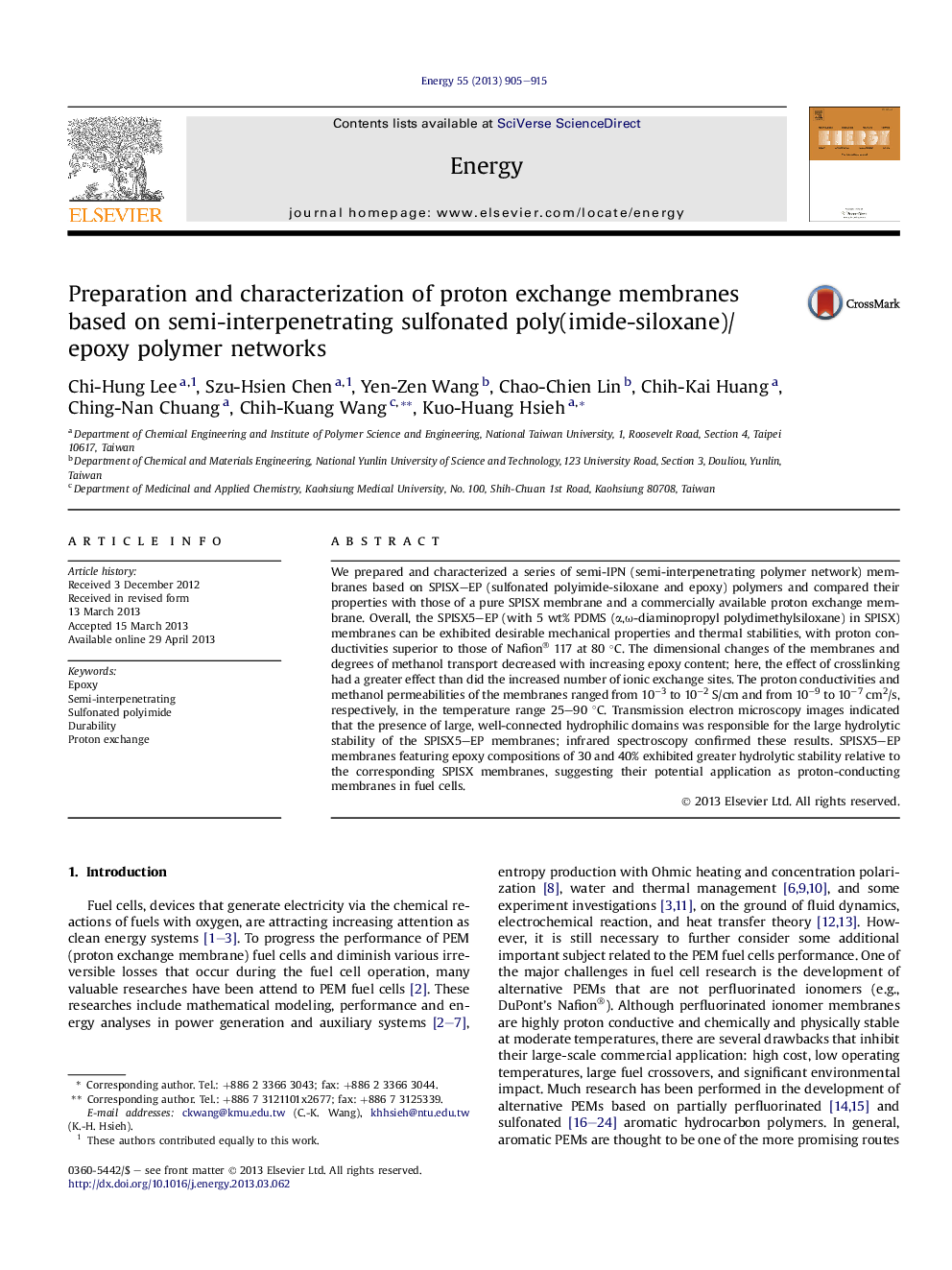| کد مقاله | کد نشریه | سال انتشار | مقاله انگلیسی | نسخه تمام متن |
|---|---|---|---|---|
| 1733027 | 1521491 | 2013 | 11 صفحه PDF | دانلود رایگان |

• Preparing semi-IPN (interpenetrating polymer network) membranes based on SPISX–EP (sulfonated polyimide-siloxane and epoxy) polymers.
• New SPISX–EP membranes were highly transparent, mechanically strong, thermally stable and greater hydrolytic stability.
• The SPISX–EP membranes can be exhibited proton conductivities closed to those of Nafion® 117 at 80 °C.
• SPISX membranes suggest their potential application as proton-conducting membranes in fuel cells.
We prepared and characterized a series of semi-IPN (semi-interpenetrating polymer network) membranes based on SPISX–EP (sulfonated polyimide-siloxane and epoxy) polymers and compared their properties with those of a pure SPISX membrane and a commercially available proton exchange membrane. Overall, the SPISX5–EP (with 5 wt% PDMS (α,ω-diaminopropyl polydimethylsiloxane) in SPISX) membranes can be exhibited desirable mechanical properties and thermal stabilities, with proton conductivities superior to those of Nafion® 117 at 80 °C. The dimensional changes of the membranes and degrees of methanol transport decreased with increasing epoxy content; here, the effect of crosslinking had a greater effect than did the increased number of ionic exchange sites. The proton conductivities and methanol permeabilities of the membranes ranged from 10−3 to 10−2 S/cm and from 10−9 to 10−7 cm2/s, respectively, in the temperature range 25–90 °C. Transmission electron microscopy images indicated that the presence of large, well-connected hydrophilic domains was responsible for the large hydrolytic stability of the SPISX5–EP membranes; infrared spectroscopy confirmed these results. SPISX5–EP membranes featuring epoxy compositions of 30 and 40% exhibited greater hydrolytic stability relative to the corresponding SPISX membranes, suggesting their potential application as proton-conducting membranes in fuel cells.
Journal: Energy - Volume 55, 15 June 2013, Pages 905–915